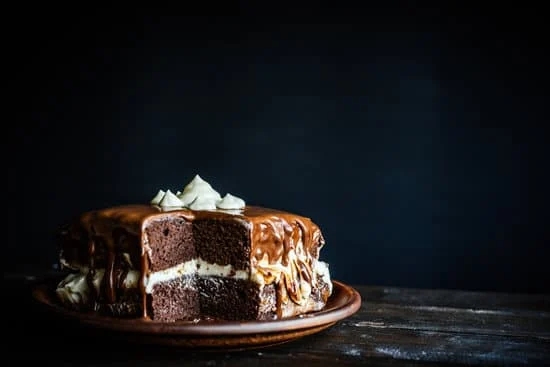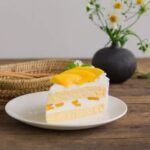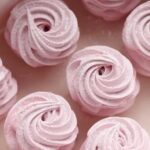Cake decorating piping patterns play a crucial role in elevating the visual appeal of cakes and desserts, adding intricate designs and personal touches. Whether you are a beginner looking to learn the basics or an experienced decorator aiming to master advanced techniques, understanding the art of piping patterns is essential. From simple swirls to complex lace designs, each pattern adds a unique charm to your creations.
The history of cake decorating piping patterns dates back centuries, with origins rooted in various culinary traditions around the world. Over time, these patterns have evolved and diversified, showcasing the creativity and skill of decorators. Different types of piping tips play a significant role in creating these patterns, offering versatility and precision in design. By exploring the wide range of tips available, decorators can achieve a myriad of effects and styles in their creations.
For those new to cake decorating, mastering basic piping techniques is the first step towards creating stunning designs. From practicing consistent pressure control to understanding proper icing consistency, beginners can build a solid foundation for their piping skills. As decorators progress in their journey, they can challenge themselves with more advanced piping patterns that require precision and expertise. With dedication and practice, perfecting piping patterns can take your cake decorating skills to new heights.
History of Cake Decorating Piping Patterns
Cake decorating piping patterns have a rich history that dates back centuries. The art of piping patterns onto cakes can be traced back to medieval times when intricate designs were created using sugar paste. These early decorators used rudimentary tools like reeds and feathers to create delicate patterns on their confections. Over time, the practice evolved as new materials and techniques were developed, leading to the wide array of piping tips and techniques available today.
Through the centuries, cake decorators have continued to innovate and experiment with different piping patterns. In the 18th century, royal icing became a popular medium for creating intricate designs on cakes, with decorators using fine piping tips to achieve delicate lacework and floral motifs. The Victorian era saw an explosion of creativity in cake decorating, with elaborate piped patterns becoming a symbol of status and sophistication.
As technology advanced, so did the tools available to cake decorators. In the early 20th century, metal piping tips began to replace the traditional organic materials like reeds and feathers. This allowed for greater precision and consistency in creating piping patterns. Today, there is a wide variety of piping tips available, each designed to create specific patterns ranging from simple dots and lines to intricate lacework and floral designs.
- Medieval times – Use of rudimentary tools like reeds and feathers
- 18th century – Royal icing becomes popular medium for intricate designs
- Victorian era – Elaborate piped patterns symbolize status
- Early 20th century – Metal piping tips replace organic materials
- Today – Wide variety of specialized piping tips available for different patterns
In modern times, cake decorating has become an art form in its own right, with decorators pushing the boundaries of creativity with their stunning creations. Whether it’s replicating intricate lacework or crafting whimsical designs, cake decorators are constantly exploring new techniques and pushing themselves to master the craft of cake decorating piping patterns.
Different Types of Piping Tips
When it comes to cake decorating piping patterns, the type of piping tip you use plays a crucial role in determining the design and outcome of your creation. There are various types of piping tips available in the market, each serving a unique purpose and creating distinct patterns on cakes. Understanding the differences between these tips can help you achieve the desired look for your cake decorations.
Round Piping Tips
Round piping tips are one of the most versatile tips and are commonly used for outlining, writing, and creating simple designs on cakes. With round tips, you can easily create uniform lines and dots for a clean and polished look. These tips are perfect for beginners due to their simplicity and ease of use.
Star Piping Tips
Star piping tips feature a serrated edge that creates beautiful star-shaped patterns when piped onto cakes. These tips are great for adding texture and dimension to your designs, making them ideal for borders, rosettes, and swirls on cupcakes or larger cakes. Star tips come in various sizes, allowing for different sized stars depending on your preference.
Petal Piping Tips
Petal piping tips have a curved edge that helps create realistic flower petals when used to pipe floral designs on cakes. These tips are perfect for creating intricate flower decorations like roses, daisies, or sunflowers. By using different colors of frosting with petal tips, you can achieve stunning floral arrangements that will impress any recipient. Experimenting with different techniques using petal tips can elevate your cake decorating skills to the next level.
Basic Piping Techniques
Cake decorating piping patterns are an essential part of creating beautifully decorated cakes that stand out. For beginners looking to improve their skills in cake decorating, mastering basic piping techniques is a great place to start. One of the most common piping patterns for beginners is the classic rosette, which involves starting in the center of the cake and swirling outward in a circular motion. This simple yet elegant pattern can add a touch of sophistication to any cake.
Another popular basic piping technique is the shell border, which consists of creating small shells along the edges of the cake. This pattern is versatile and can be used to frame the top or bottom borders of your cake.
To achieve a perfect shell border, make sure to maintain consistent pressure on your piping bag as you pipe each shell. Practice is key when it comes to mastering these fundamental piping patterns, so don’t be discouraged if your first attempts are not flawless.
As you progress in your cake decorating journey, you can experiment with more intricate piping patterns such as lace designs or basketweave patterns. These advanced techniques require a steady hand and precise movements, but with practice and patience, you can create stunning works of edible art. Remember that practice makes perfect when it comes to cake decorating piping patterns, so don’t be afraid to try new techniques and push your creative boundaries.
| Piping Pattern | Description |
|---|---|
| Rosette | Classic swirl pattern starting from the center of the cake. |
| Shell Border | Creating small shells along the edges for framing. |
Advanced Piping Patterns
Cake decorating piping patterns are an exciting way for experienced cake decorators to showcase their skills and creativity. These advanced piping patterns often involve intricate designs and complex techniques that require a steady hand and attention to detail. By mastering these advanced patterns, decorators can take their cake decorating to the next level and create stunning, eye-catching creations.
One popular advanced piping pattern is the basketweave design, which resembles a woven basket. This technique involves alternating vertical and horizontal lines of frosting to create a textured look that adds depth to the cake. Another challenging pattern is the lace design, where delicate lace-like patterns are piped onto the cake for an elegant and sophisticated touch. These advanced patterns require practice and patience, but the end result is well worth the effort.
For those looking to push their skills even further, 3D piping patterns offer a unique challenge. These intricate designs create a three-dimensional effect on the cake, adding depth and dimension. From flowers to figures, 3D piping patterns allow experienced decorators to showcase their artistry in new and innovative ways. By experimenting with different techniques and incorporating various piping tips, decorators can create truly breathtaking masterpieces that are sure to impress any audience.
| Advanced Piping Patterns | Description |
|---|---|
| Basketweave | Alternating vertical and horizontal lines of frosting for a textured look |
| Lace Design | Piping delicate lace-like patterns onto the cake for an elegant touch |
| 3D Piping Patterns | Creating three-dimensional effects on the cake with intricate designs |
Tips for Perfecting Piping Patterns
Use the Right Consistency of Frosting
One key factor in achieving perfect piping patterns is using the right consistency of frosting. If your frosting is too thin, it will not hold its shape and the patterns might not turn out as you intended.
On the other hand, if the frosting is too thick, it will be difficult to pipe smoothly. To achieve the ideal consistency for piping, you can adjust the amount of liquid or powdered sugar in your frosting recipe until it reaches a point where it holds its shape well but is still easy to pipe.
Practice Proper Pressure Control
Another important tip for perfecting piping patterns is mastering proper pressure control while piping. The amount of pressure you apply to the piping bag will determine the thickness and flow of your pattern. For more intricate designs, you may need to vary the pressure throughout the piping process.
Practice different pressure levels on a practice surface before moving on to decorate your actual cake. This will help you get a feel for how much pressure to apply for different patterns and designs.
Get Comfortable With Different Piping Tips
To ensure that your piping patterns look flawless every time, it’s essential to become familiar with different types of piping tips and how they create various patterns. Experiment with different tips such as round tips, star tips, leaf tips, and petal tips to see how each one can produce unique designs.
By getting comfortable with using a variety of piping tips, you’ll be able to expand your repertoire of patterns and create stunning decorations for your cakes. Remember that practice makes perfect when it comes to mastering cake decorating piping patterns.
Creative Examples of Piping Patterns
When it comes to cake decorating, piping patterns play a crucial role in adding intricate details and designs that can elevate the overall look of your creation. From simple swirls to elaborate floral motifs, the possibilities are endless with the use of different piping tips and techniques. To truly inspire your creativity and take your cake decorating skills to the next level, here are some creative examples of piping patterns that you can try:
- Ruffle Effect: Create a stunning ruffle effect by using a petal tip to pipe overlapping layers of icing around the sides of your cake. This technique adds texture and dimension, perfect for elegant wedding cakes or vintage-themed desserts.
- Geometric Patterns: Experiment with geometric shapes like squares, triangles, or hexagons by using a round tip to pipe straight lines or zig-zags onto your cake. This modern and abstract design is great for contemporary celebrations or artistic birthday cakes.
- Lace Detailing: Achieve a delicate lace detailing on your cake by using a lace decorating tip to create intricate lace patterns. This romantic and sophisticated design is ideal for bridal showers, anniversaries, or high-tea parties.
Whether you’re aiming for a classic look or want to push the boundaries with avant-garde designs, these creative examples of piping patterns can help spark your imagination and enhance your cake decorating repertoire. Remember to practice patience and precision when piping these intricate patterns to achieve professional-looking results that will impress both guests and clients alike.
By incorporating these unique piping patterns into your cake decorating projects, you not only showcase your skills as a decorator but also infuse personality and artistry into each creation. So don’t be afraid to experiment with different techniques, colors, and textures to bring your vision to life on every sweet masterpiece. With practice and dedication, you’ll soon master the art of cake decorating piping patterns and create confectionery delights that are both visually stunning and deliciously tempting.
Piping Patterns for Different Occasions
As we delve deeper into the world of cake decorating piping patterns, it becomes clear that the artistry and precision involved in creating these designs are truly remarkable. Mastering different piping patterns opens up a world of possibilities for transforming ordinary cakes into stunning works of edible art. Whether you are a novice looking to enhance your skills or an experienced decorator seeking inspiration, understanding how to utilize piping patterns for various occasions is essential.
When it comes to birthdays, vibrant and playful piping patterns can add an extra touch of excitement to any celebration. From colorful confetti designs to whimsical animal shapes, the options are endless.
For weddings, elegant and sophisticated piping patterns such as intricate lace details or delicate floral motifs can elevate the look of the cake and tie in perfectly with the overall theme of the event. Holidays present a unique opportunity to get creative with seasonal piping patterns like snowflakes for winter or flowers for spring, adding a festive flair to your desserts.
It is important to remember that practice makes perfect when it comes to mastering cake decorating piping patterns. Experimenting with different piping tips, practicing basic techniques, and learning from experienced decorators can all contribute to improving your skills over time.
With dedication and perseverance, you can become adept at creating beautiful and intricate designs that will impress anyone who sees your creations. So don’t be afraid to unleash your creativity and explore the endless possibilities that cake decorating piping patterns have to offer.
Frequently Asked Questions
What Is the Easiest Piping Tip for Beginners?
The easiest piping tip for beginners to use is the round tip. It is versatile and forgiving, making it great for creating simple designs like borders, dots, and writing on cakes. With a round tip, you can easily control the pressure to achieve smooth lines.
How Do You Know Which Piping Tip to Use?
Knowing which piping tip to use depends on the design you want to create. For example, if you want to make ruffles or petals, a petal tip would be ideal.
If you aim for stars or shells, a star tip is the way to go. It’s essential to consider the shape and size of the tip to achieve the desired outcome.
How to Do Basic Piping on a Cake?
To do basic piping on a cake, start by filling your piping bag with frosting and securing it tightly at the top. Hold the bag at a 45-degree angle to the surface of the cake and apply gentle pressure to pipe out the frosting.
Practice consistent pressure for even results and experiment with different tips for various designs. Remember to keep a steady hand while piping for clean lines or shapes on your cake.

Welcome to our cake decorating blog! My name is Destiny Flores, and I am the proud owner of a cake decorating business named Cake Karma. Our mission is to provide delicious, beautiful cakes for all occasions. We specialize in creating custom cakes that are tailored specifically to each customer’s individual needs and tastes.





